Gobo Sushi
If you’re a sushi lover like me, you’re in for a real treat. Gobo sushi brings together the flavors of Japan with a twist of creativity and a burst of crunchy freshness. It’s the perfect fusion of tradition and innovation, and you won’t believe how easy it is to make at home.

What is gobo sushi?
Gobo sushi, also known as “Burdock Root Sushi,” is a unique variation of traditional sushi that originated in Japan. The star ingredient, gobo, refers to burdock root, which is a long, slender, and earthy-flavored root vegetable commonly used in Japanese cuisine.
To create gobo sushi, the burdock root is first thinly sliced and then marinated in a sweet and savory sauce. You can make your own with this yamagobo recipe or you can buy it premade at your local Asian grocery store.
Once the gobo is marinated, it becomes the central element in making the sushi roll. It’s traditionally combined with sushi rice and other ingredients like cucumber, pickled radish, avocado, or tempura flakes, depending on personal preferences.
Gobo sushi offers a fantastic vegetarian option for sushi lovers and introduces a taste of authentic Japanese cuisine with a contemporary twist. Whether you’re an avid sushi fan or simply seeking to explore new culinary delights, gobo sushi is a must-try dish that promises to satisfy your palate with its delicious medley of flavors and textures.
Kitchen Tools
- Sushi Bamboo Rolling Mat: also known as a sushi rolling mat or makisu, is a traditional tool used in Japanese cuisine to make sushi rolls. It is an essential utensil for sushi chefs and home cooks when preparing maki sushi, which are the cylindrical rolls with nori (seaweed) on the outside and rice and fillings on the inside. It allows the user to shape and roll the sushi ingredients tightly into a compact roll.
- Plastic wrap: I like wrapping the sushi mat with a layer of plastic wrap for easy clean up.
- Sharp knife: use a sharp knife to cut the sushi. Do not use a serrated knife.
Ingredients Needed

- Yamagobo: pickled burdock root, make your own (with this yamagobo recipe) or buy it in the refrigerated pickled vegetable aisle at the Asian grocery store or on Amazon.
- Nori seaweed sheet: cut Nori in half to make 2 sushi rolls.
- Cooked Sushi Rice: make the sushi rice ahead of time and let it cool down.
- Rice Vinegar: it is a key ingredient in sushi rice because it adds a tangy and slightly sweet flavor to the rice.
- Sugar: the combination of sugar and vinegar creates a delicate sweet-sour balance, which is a hallmark of sushi rice.
- Salt: a fundamental seasoning that brings out the natural flavors of the sushi rice. It helps balance the sweetness of the sugar and the tanginess of the vinegar.
Please scroll ⬇️ to the recipe card to see the full ingredient amounts and instructions.
How to Make Gobo Sushi
Step 1: Prepare the sushi rice. In a small bowl, mix rice vinegar, sugar, and salt until the sugar and salt dissolve. Add the cooked rice and mix until incorporated.


Step 2: Prepare the nori sheet and gobo. Cut the nori seaweed sheets in half. Slice the pickled gobo into thin matchstick strips. Cover the bamboo sushi rolling mat with plastic wrap for easy cleanup.


Step 3: Assemble the sushi roll. Place a sheet of nori on a bamboo sushi rolling mat. Wet your fingers to prevent the rice from sticking and spread a thin layer of sushi rice over the nori. Flip the nori over so that the rice is faced down on the bamboo mat. Arrange the marinated gobo and your choice of fillings along the center. Lift the bamboo mat’s edge and start rolling the sushi away from you, using the mat to shape and compress the roll. With a sharp, non-serrated knife, slice the sushi roll into bite-sized pieces.

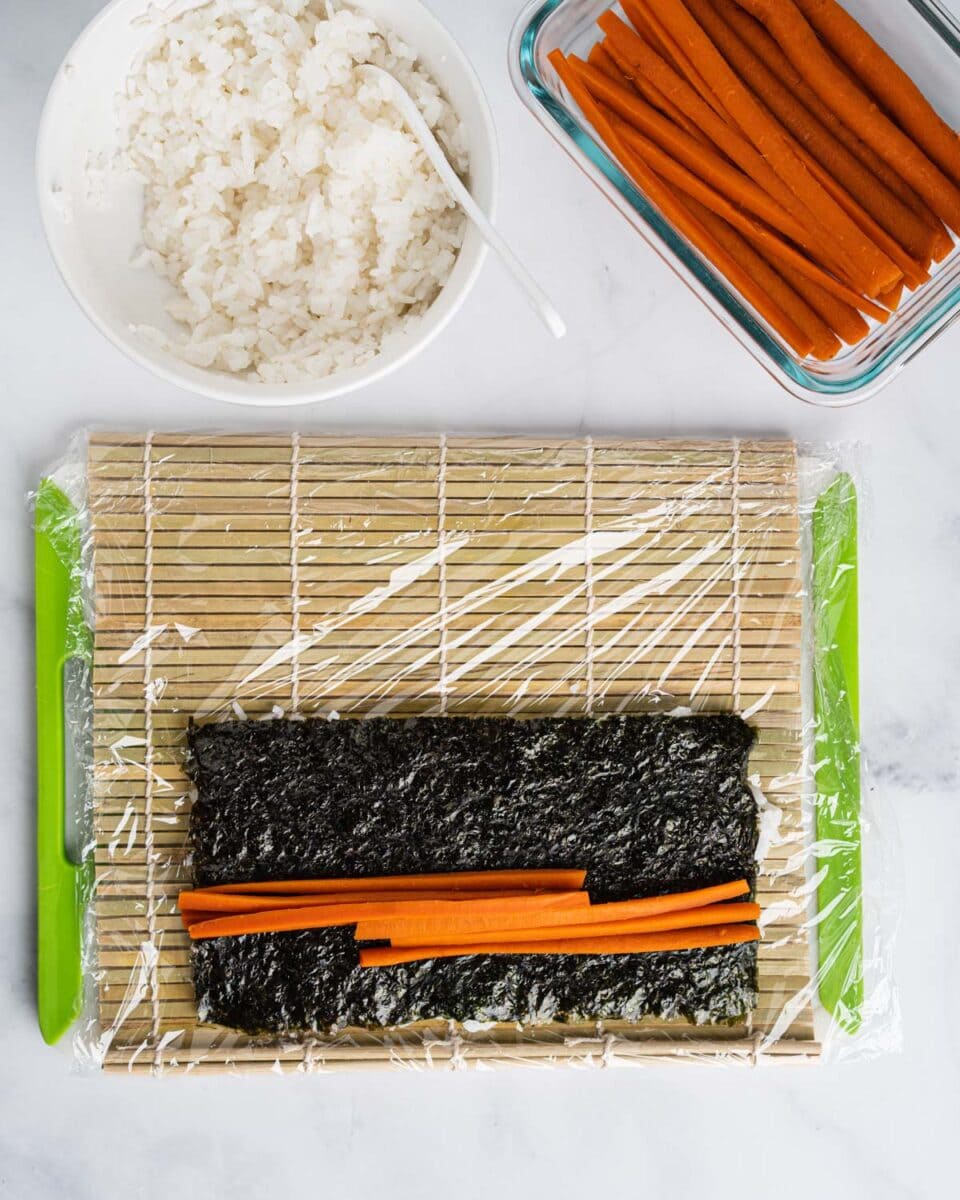
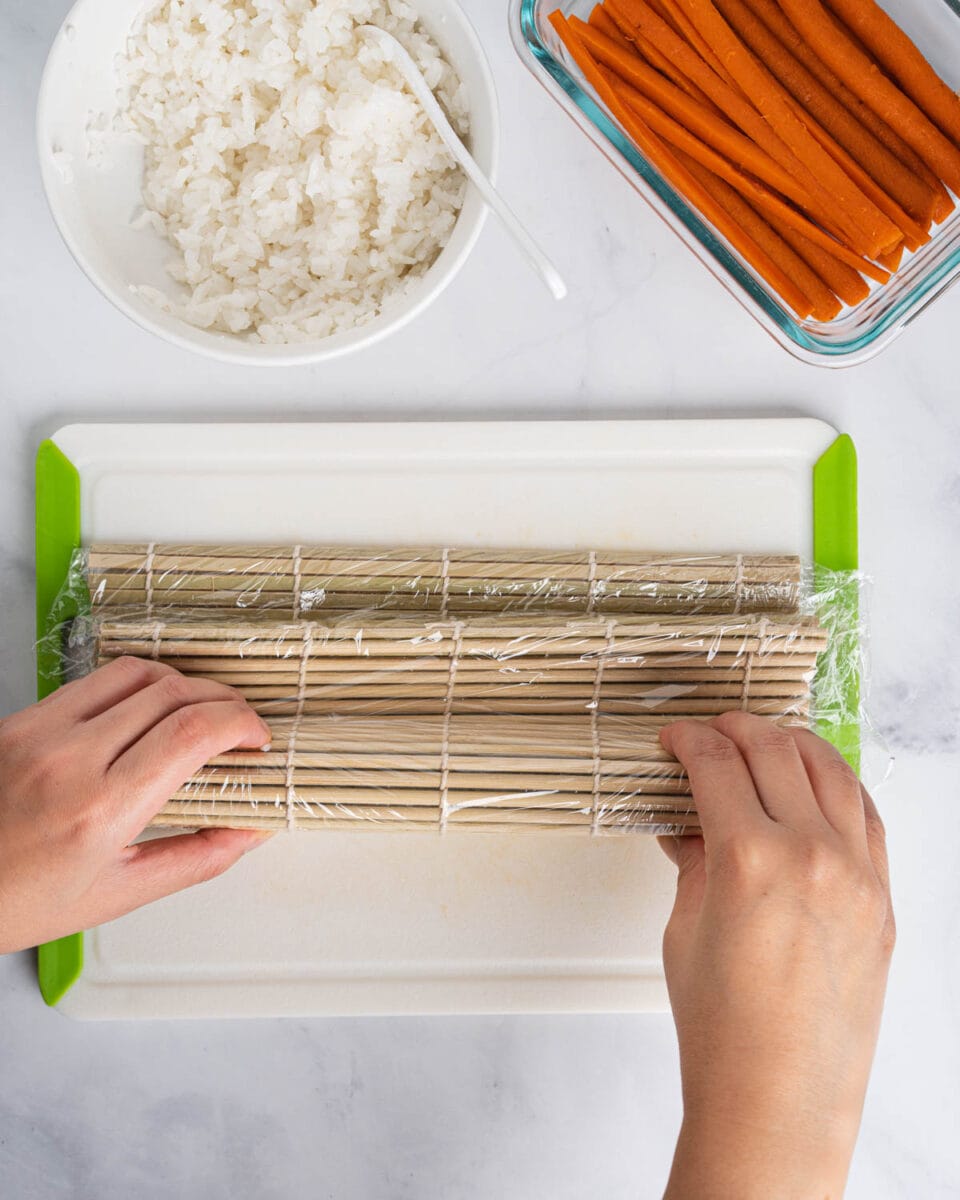

Serve with soy sauce, wasabi, and pickled ginger.
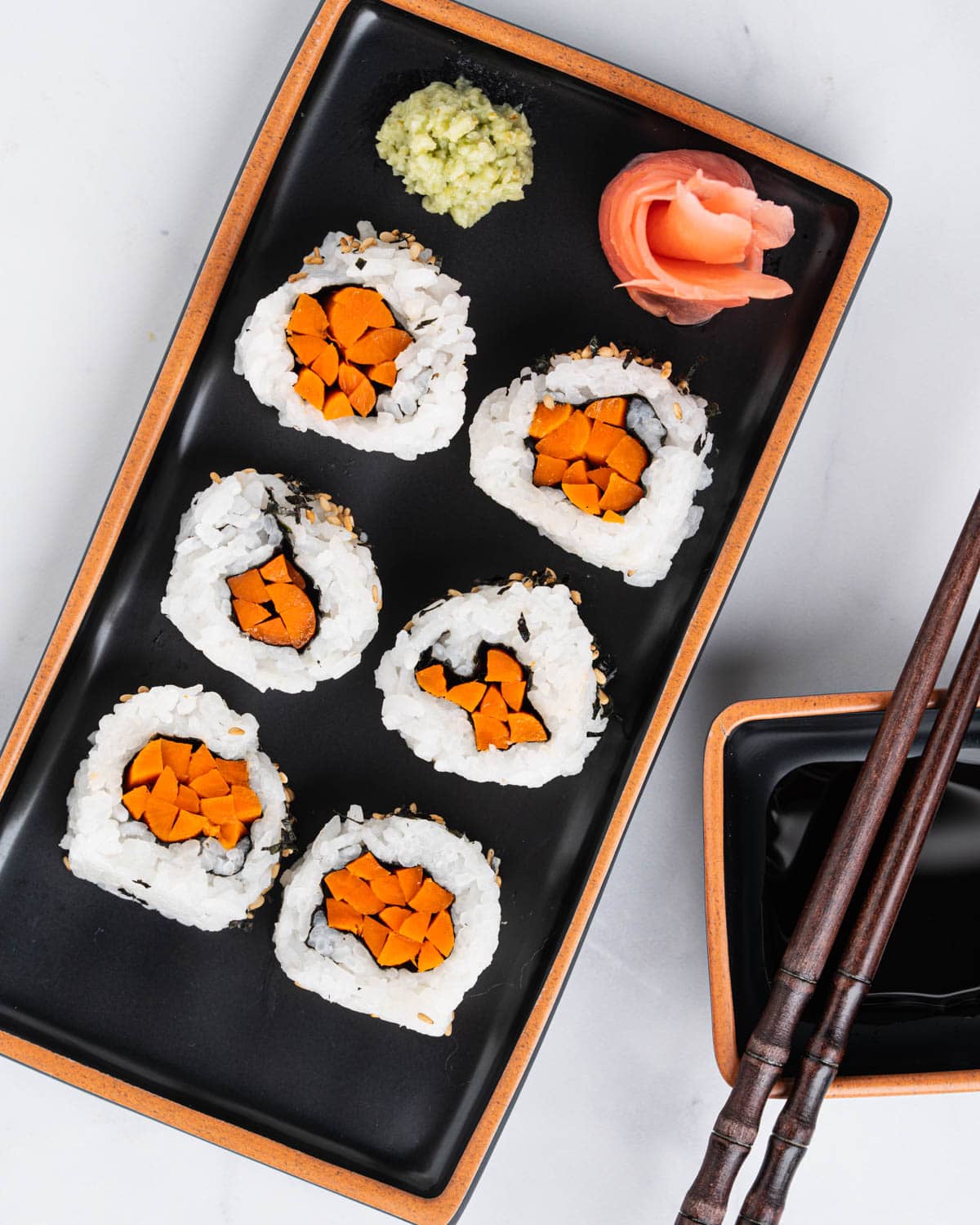
Tips for the best gobo sushi rolls
- Choose Fresh and Quality Ingredients: The success of any sushi roll depends on the quality of its ingredients. Pick fresh and tender gobo (burdock root) to ensure a great texture and flavor. Use high-quality sushi rice to enhance the overall taste.
- Properly Prepare the Gobo: Cut the gobo into thin, uniform slices for easy rolling.
- Use a Bamboo Sushi Rolling Mat: For neat and tight sushi rolls, invest in a bamboo sushi rolling mat. It helps shape and compress the ingredients into a uniform roll, preventing them from falling apart during slicing.
- Be Creative with Fillings: While gobo is the star of gobo sushi, don’t be afraid to get creative with your fillings. Combine gobo with other vegetables like cucumber, avocado, or pickled radish to add a variety of textures and flavors.
- Slice with a Sharp Knife: Use a sharp, non-serrated knife to slice the gobo sushi. Wet the blade between cuts to ensure clean and precise slices.
- Serve Fresh and Enjoy Promptly: Sushi is best when it’s fresh. Serve your gobo sushi immediately, and enjoy it promptly to experience the full freshness and flavors.
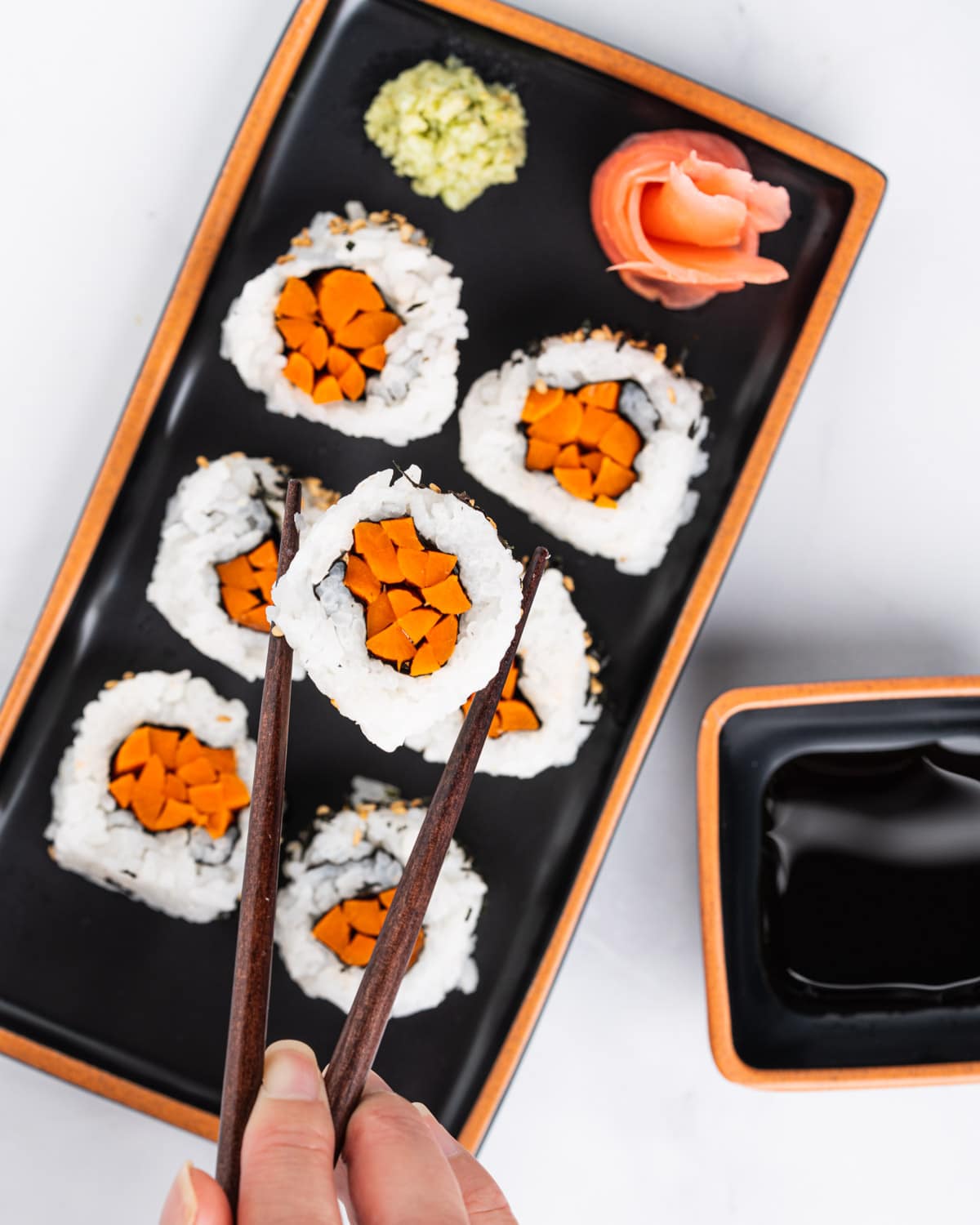
Frequently Asked Questions
Yamagobo, also known as “mountain burdock,” is a type of pickled burdock root commonly used in Japanese cuisine. It is a variation of gobo (burdock root) that undergoes a specific preparation process to create its unique flavor profile. Yamagobo is typically pickled with a combination of sugar, vinegar, and sometimes other seasonings to achieve a slightly sweet and tangy taste. The pickling process not only enhances the natural earthy flavor of burdock root but also adds a delightful crunch to the texture. Yamagobo is a popular ingredient in various Japanese dishes, including sushi rolls, salads, and as a garnish for rice and noodle dishes.
The gobo, or pickled burdock root, is tangy, sweet, and crunchy from the marinating process. The gobo’s texture adds a satisfying crunch to the sushi roll, contrasting beautifully with the softness of the seasoned rice. The sushi rice is seasoned with rice vinegar, sugar, and salt. The result is a perfectly balanced seasoning that complements the gobo’s flavors without overpowering it.
How to store leftovers
Refrigerate
Wrap the leftover Gobo Sushi tightly with plastic wrap or place it in an airtight container. Make sure there is no exposure to air, as this can cause the rice to dry out.
Use within 24 Hours. For the best taste and texture, try to consume the leftover sushi within 24 hours. Sushi is at its peak quality shortly after preparation, so the sooner you enjoy it, the better.
Avoid Freezing
It’s generally not recommended to freeze sushi, as freezing can alter the texture and taste of the rice and other ingredients.
Reheating
Sushi is traditionally served cold, and reheating it may negatively affect the taste and texture. If you prefer warm sushi, consider removing it from the refrigerator and letting it come to room temperature before eating.

RECIPE

Gobo Sushi
Equipment
Ingredients
Sushi Rice
- 2 cups cooked sushi rice
- 2 tablespoons rice vinegar
- 1 tablespoon sugar
- 1 teaspoon salt
Gobo Sushi Roll
- 16 oz yamagobo (pickled gobo)
- 2 Nori sheet cut in half
For Serving (optional)
- soy sauce
- wasabi
- pickled ginger
Instructions
- Prepare the sushi rice: In a small bowl, mix rice vinegar, sugar, and salt until the sugar and salt dissolve. Add the cooked rice and mix until incorporated.
- Prepare the nori and gobo: Cut the nori seaweed sheets in half. Slice the gobo into thin matchstick strips. Cover the bamboo sushi rolling mat with plastic wrap for easy cleanup.
- Assemble the sushi roll: Place a sheet of nori on a bamboo sushi rolling mat. Wet your fingers to prevent the rice from sticking and spread a thin layer of sushi rice over the nori. Flip the nori over so that the rice is faced down on the bamboo mat. Arrange the marinated gobo and your choice of fillings along the center. Lift the bamboo mat's edge and start rolling the sushi away from you, using the mat to shape and compress the roll. With a sharp, non-serrated knife, slice the sushi roll into bite-sized pieces.
- Serve with soy sauce, wasabi, and pickled ginger.




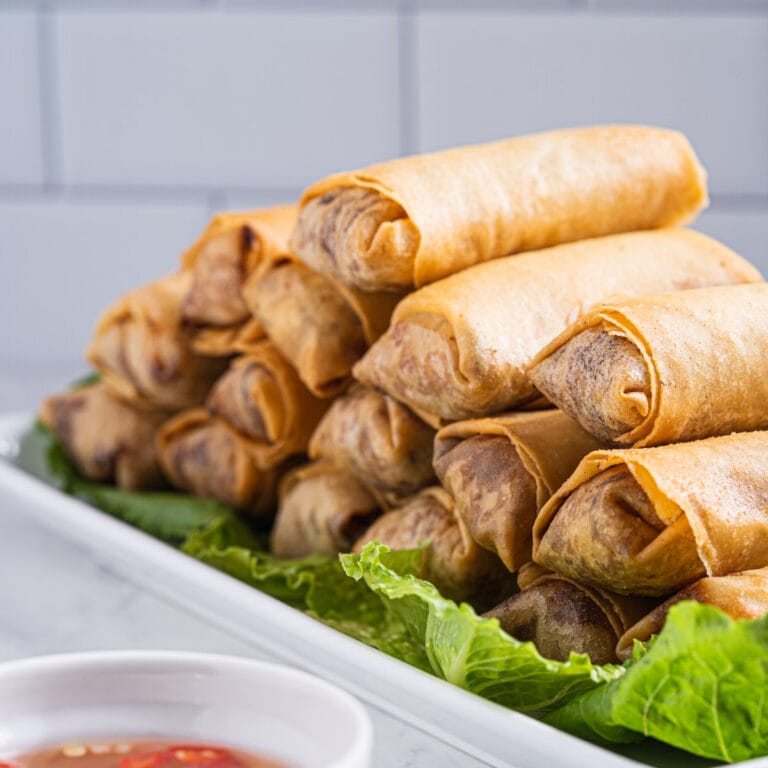
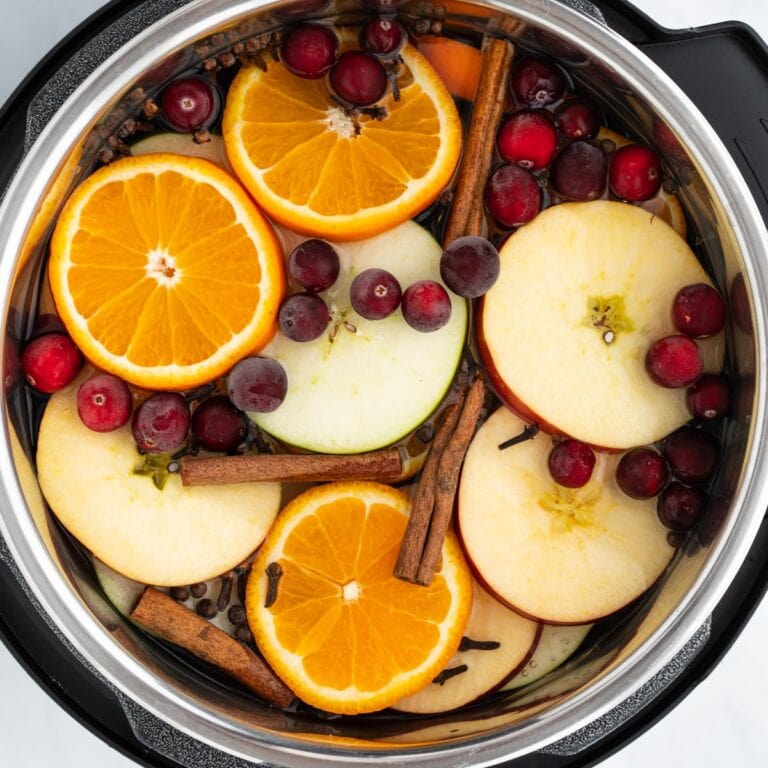

I am a huge fan of sushi and this recipe is no exception! Quick, easy and delicious; definitely, a new favorite recipe!
I have been looking for vegetarian sushi recipes since being pregnant! Can’t wait to try this gobo sushi, it looks incredible!
This was delicious! So happy I tried making it. I was a little nervous rolling my own sushi, but it was easy to get the hang of.
For someone like me who is new to making sushi, this is such an easy recipe to start out with. This would be fun to make together with a group of friends.
That looks extremely tasty! I’m a big fan of sushi, and I love the idea of making this at home. No need to head out to a restaurant!